We've just got in our newly-machined RW2 hubs & tires - and they're better! Instead of the old 1/8" axle hole that didn't quite fit the GM11a-14a series correctly (they were too loose), these new ones fit perfectly with their 3mm hole!
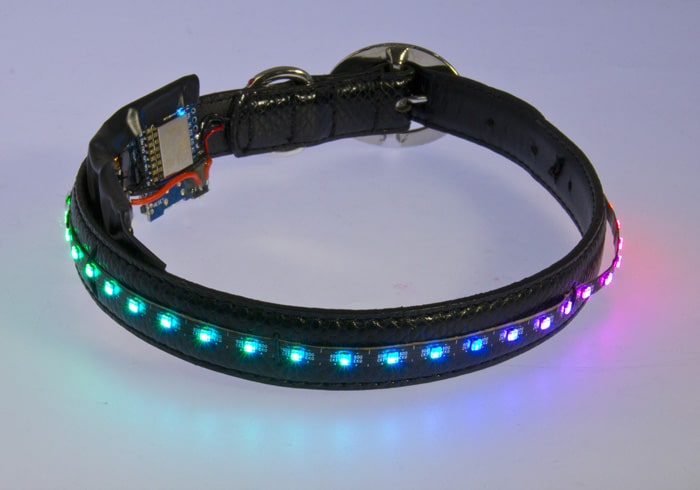
APA102-2020 MicroNova Custom LED Choker
I created this choker as a project to demonstrate the new MicroNova APA102-2020 LED strips.

Photo by Yeti, edited by Batgirl
These addressable LEDs are extremely small, less than 1/4 the size of a standard 5050 LED.
This project was built using engineering sample standard MicroNova 99 LED / meter strips . The MicroNova strips we are selling have 198/meter - twice the density!
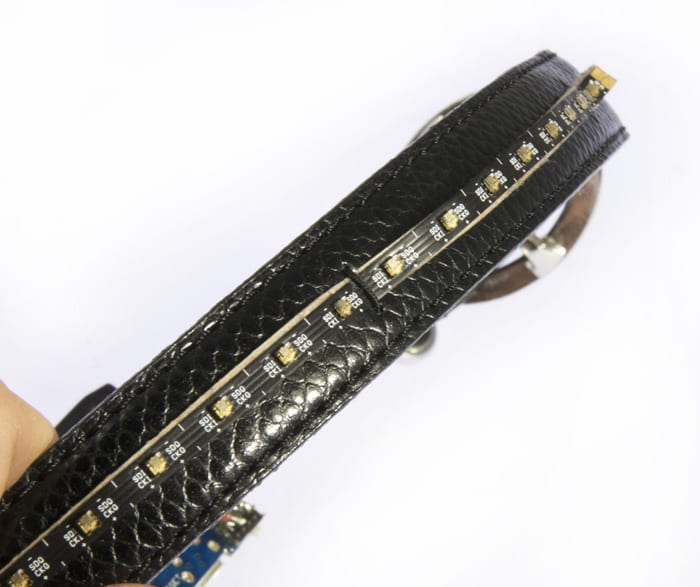
Reason for a Choker necklace:
Hats have been done, shoes have been done, pendants have been done. This is something new for a Valentine’s dance costume, so I decided to go with a choker design. I also wanted something that was interactive, something that would add another layer of WOW to just lighting.
The Build:
I used a Wemos D1 Mini development board along with a boost-converting battery shield for the Wemos D1.

The battery shield was a particularly good choice here because the MicroNova LEDs should be supplied a solid 5VDC. This board boosts the battery voltage to 5V, and then the Wemos D1 Mini bucks it down to 3V3 for it's own operation.
A mini SPDT Slide switch toggles the power from the battery shield to the D1. This allows charging the battery using the battery shield USB connector while not powering the D1.
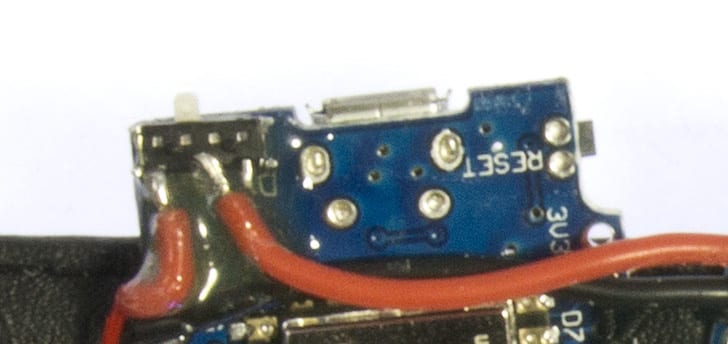
Epoxy locks the switch and wires in place.
The battery used is a conveniently handy older 450mAh Lithium Polymer. Depending on the lighting mode, this battery can power the necklace for a couple of hours.
I used elastic thread to attach the LED strip and components to the necklace. A heavy duty needle was all that was needed to punch through the (imitation) leather belt. Because the thread was elastic and tied under tension, it held the MicroNova strip well in place.
Operation:

When the choker powers up, it creates a WiFi Access Point called "HeartBurnChoker1".
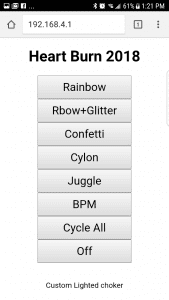
Once I connected to this WiFi, I opened a browser and went to 192.168.4.1. The control interface is simple, but effective. The D1 Mini has more than ample power and speed to effectively drive these LEDs. The MicroNova features separate clock & data lines, so even relatively slow I/O (like Raspberry Pi) can still make it work.
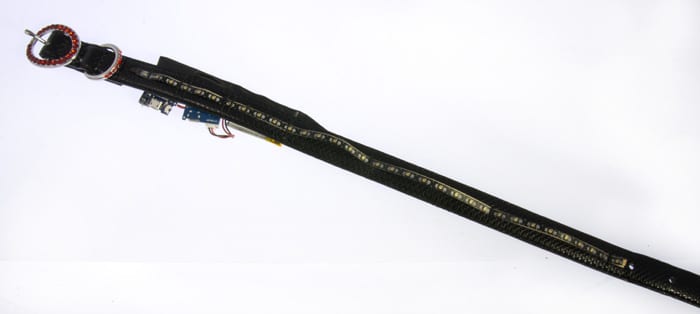
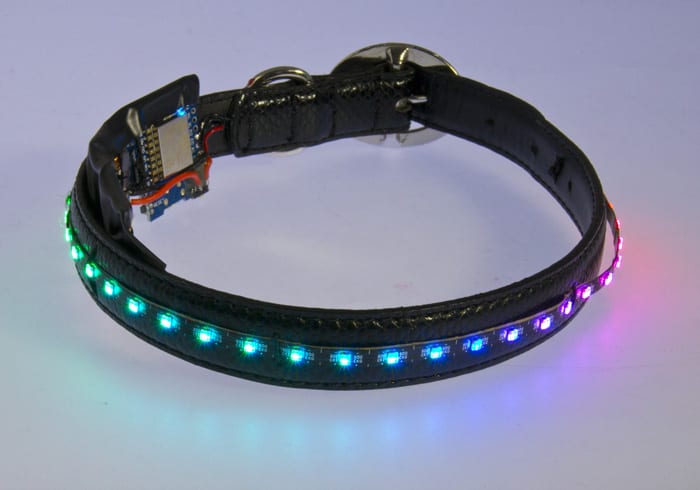
Video of the Collar in Action
MORE POSTS
Well, we're all back from Maker Faire, feelin' pretty groggy but fairly alive (or, perhaps more accurately, undead - something about being in a zombie-like state sounds about right). So to break the recent drought of news posts, we've dug out a treat from the deeper regions of the Solarbotics server archives. This is some […]
It's July 4th! That means all of our pals to the south of the border are having a grand ol' time celebrating their independence from British colonialism and extra-terrestrial invasion. So in honour of their national holiday and the fact that it's a Wednesday, we have another round of neat links to sift through. Nixie […]
Woot! (Ok, I know it's spelt W007) The Sumovore is featured in volume 4 of Make Magazine in their suggested shopping list! For those of you who don't know about this killer quarterly publication from the fine folks at O'Reilly & Associates, you have to check it out. Makezine is ideal for all you DIY […]
Solarbotics, Ltd. is not responsible for misprints or errors on product prices or information. For more information, please see our Terms and Conditions.
Warning: This product contains chemicals known to the State of California to cause cancer and birth defects or other reproductive harm.
Please visit www.P65Warnings.ca.gov for more information. This item was manufactured prior to August 31, 2018.

